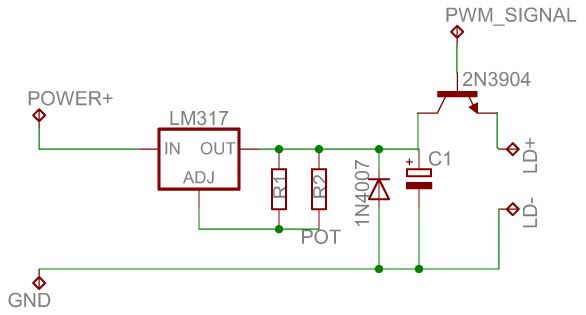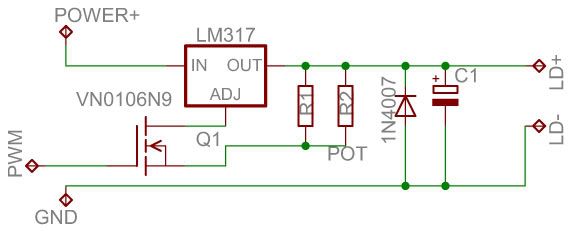It is possible to change the pump diode in a green pointer, but not with a DVD burner diode. It requires an 808nm diode to make the crystals produce green.
Depending on how fast you want to modulate, you can modulate the supply to the LM317, but special cicuitry id required to modulate directly at the diode. If you use the circuit you've provided, you might blow the diode due to the fact that the signal will not be 100% clean. The signal that reaches the diode must be clean with absolutely no overshoot. You'd need to add filter circuitry after the transistor to make sure that the signal is clean, but the filter needs to be specially designed so that you can modulate at a high rate of speed.










